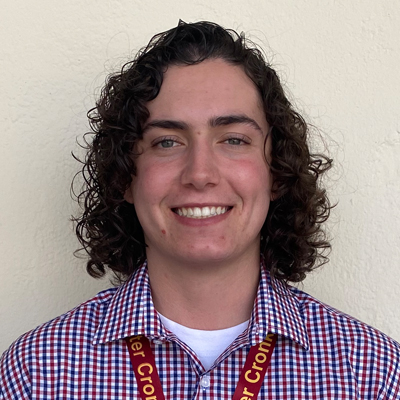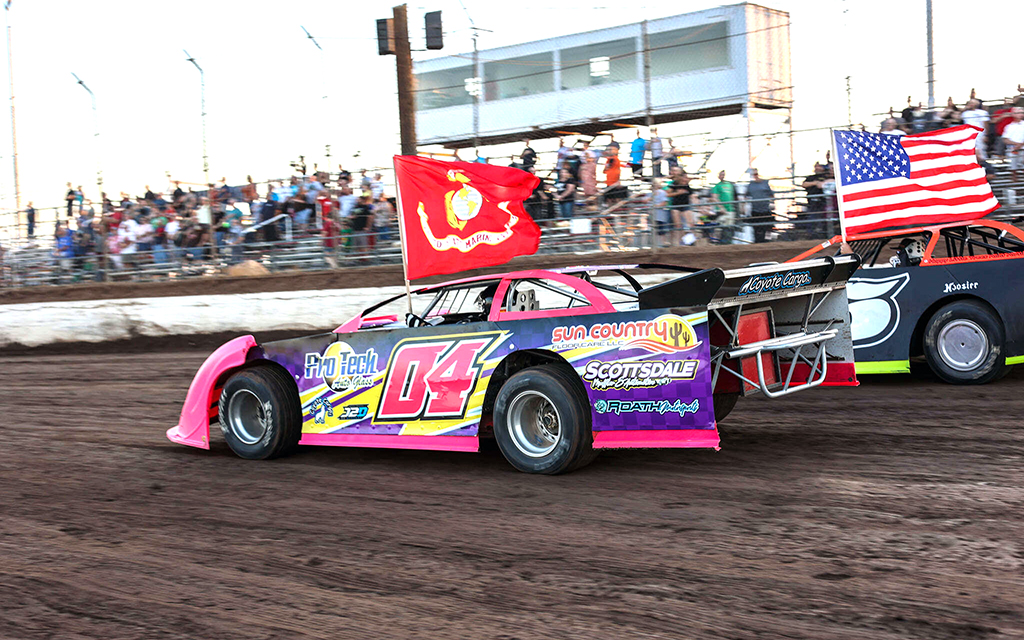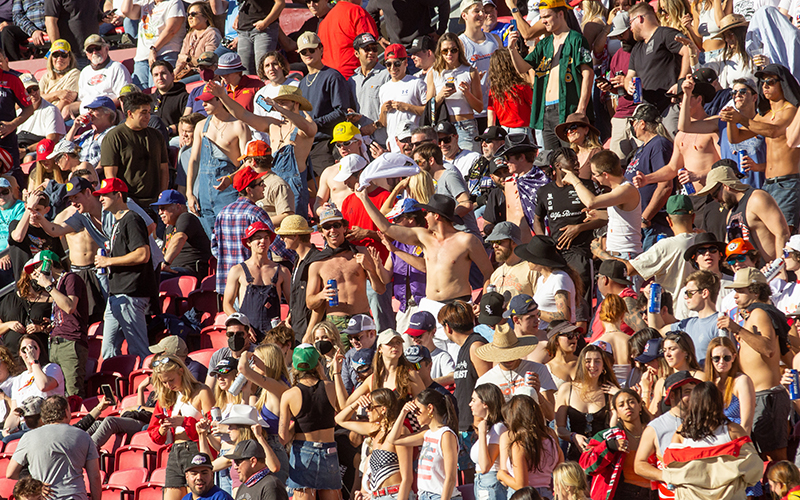
Thousands of fans, including many first-timers, flocked to the Los Angeles Memorial Coliseum for Sunday afternoon’s exhibition race. (Photo by Lauren Lively/Cronkite News)
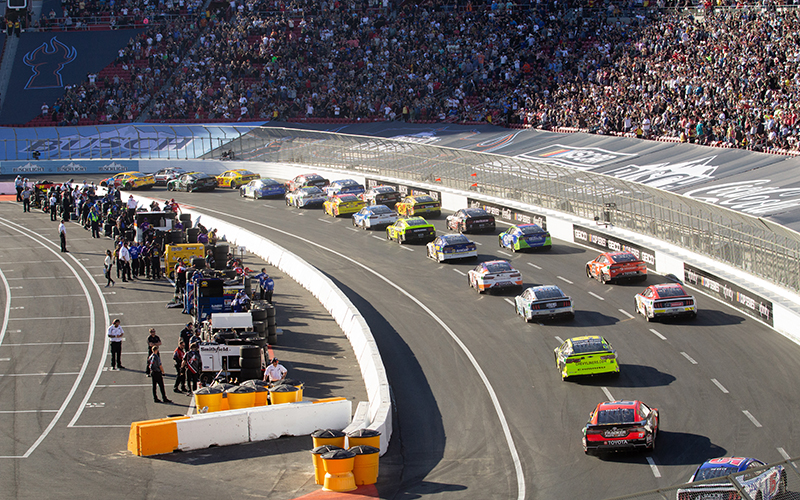
Twenty-three drivers started Sunday’s Busch Light Clash at the Coliseum, and 19 finished. The 150-lap race was run on a quarter-mile track, NASCAR’s shortest course in more than 50 years. (Photo by Lauren Lively/Cronkite News)
LOS ANGELES – Sunday afternoons at the Coliseum have long been a Southern California sports tradition, and this week a new competition barreled into this sporting shrine for the first time: NASCAR’s Clash.
“I thought it was great,” said Kyle Busch, who finished second to Joey Logano. “I don’t know if it had anything to do with the stadium aspect. There’s fans coming from this way, this way, this way” he said, gesturing to the stands. “You definitely had more of a roar.”
After four decades of racing at Daytona International Speedway, the annual preseason exhibition race moved to the West Coast this year. The Los Angeles Memorial Coliseum is the only building to ever host such a broad variety of events, including two Olympiads, two Super Bowls and a World Series.
To host the Busch Light Clash, the 99-year-old Coliseum underwent a complete makeover. The asphalt racetrack was installed 4 feet above the Coliseum’s grass. The quarter-mile finished product was the shortest for a NASCAR race since 1971. Twenty-three cars started and 19 finished. Top speeds during practice were estimated at 75, much lower than a typical NASCAR race.
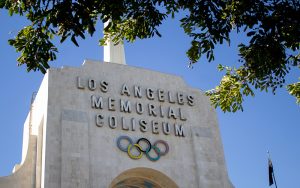
The Los Angeles Memorial Coliseum on Sunday welcomed NASCAR in for the first time in the stadium’s 99-year history. (Photo by Lauren Lively/Cronkite News)
Adding energy to the crowd, Pitbull performed before the start, Ally Brooke sang the national anthem and Ice Cube took the stage at halftime. The fervor went beyond the stadium gates: On Twitter, the Clash was trending over the NFL’s Pro Bowl, which was going on at the same time as the race.
“It’s great to see the reaction around it,” said Ben Kennedy, NASCAR’s senior vice president of strategy and innovation. “We had fans from 50 states here. Also people all around the world watching us today. Really neat that they were able to get that, cool that we’re still in that spot.”
Steve O’Donnell, NASCAR’s executive vice president, chief racing development officer, and a self-described “huge sports fan,” knew Sunday’s event was a step toward putting NASCAR in the discussion as one of America’s major sports.
“To be able to come here … showcase our talent, how much fun our sport is, was really important,” he said. “That’s a big deal. This venue is iconic.”
Even the drivers took time to relish in their host’s historic aura, including the enormous Olympic torch that burns over the Coliseum’s entrance – a reminder of when the Games were hosted here in 1984 and 1932.
“Very cool with the sports history, I’m a huge sports buff,” said Austin Dillon, Sunday’s third-place finisher. “It’s cool when you come down, the Olympics, the torch. I took a picture under the peristyle.”

The Clash at the Coliseum was a win for the sport, says Joey Logano, who took the checkered flag on Sunday. An estimated 70% of tickets were sold to first-timers, NASCAR says. (Photo by Lauren Lively/Cronkite News)
Logano had plenty to feel good about. If he wasn’t thinking of his own trip to victory lane, it was the fact that 70% of tickets sold were to first-time fans, NASCAR officials said after the race. Logano knew the reason was clear.
“That only happened because we came to them. We were racing in the city,” he said. “Today proved that we can race anywhere. That’s the biggest win today for the future of our sport.”
Southern California native Tyler Thompson was another NASCAR newbie in attendance. And even with no knowledge of the sport, he was sucked in.
“It’s been a lot of fun,” Thompson said. “And I think it’s really good for the sport. It’s expanding its fan base.”
University of Southern California student Rhese Abrams, another first-time fan, was taken aback to see such a different event on the familiar territory of the Trojans’ football home field.
“I think (the race) adds versatility to this building,” she said. “With all its history, it’s pretty cool.”
As for 2022, the Clash was just the starting point. Thirty-six races will take place over the span of the next 10 months, with all roads leading back to Phoenix Raceway in Avondale, where a Sprint Cup champion will be crowned in November.
But next on the schedule is one of the sport’s most iconic races: the Daytona 500. And after Sunday’s turnout at the Coliseum, O’Donnell is looking forward to what’s in store for the season and the sport.
“I couldn’t think of a better promotion for the 500 than what we just saw,” he said.
